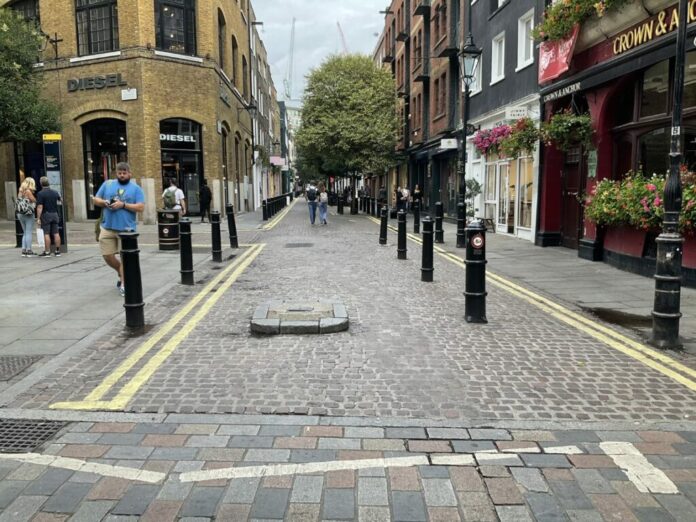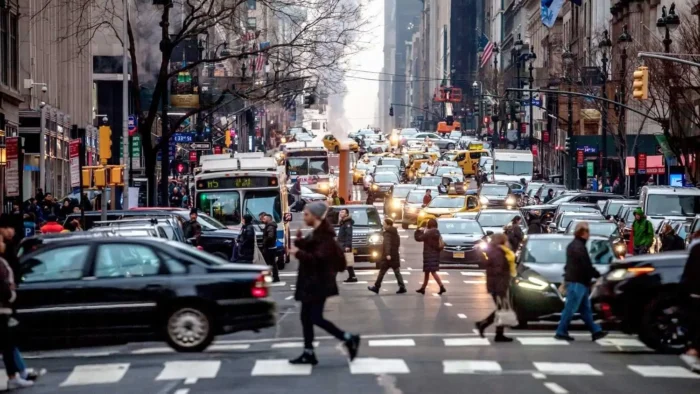
Bollards are a common sight in our urban landscape, yet they often go unnoticed. These sturdy, short, vertical posts, typically made of metal or concrete, shape our traffic behavior and ensure pedestrian safety. The humble bollard can make a huge difference when it comes to controlling vehicle movements and protecting pedestrian areas. This article explains bollards, their function and design, and their irrefutable contribution to traffic calming and pedestrian safety.
Traffic calming refers to the use of mainly physical traffic management techniques to slow down or reduce motor-vehicle traffic, thereby improving safety for pedestrians and cyclists. Pedestrian safety is a critical concern in urban planning, with the goal being to create a safe environment where pedestrians can move about freely without the threat of vehicle intrusion. The following sections provide an in-depth look into the world of bollards, how they contribute to traffic calming, and how they enhance pedestrian safety.
Understanding Bollards

Bollards, from a functional perspective, are sturdy, short, vertical posts installed primarily to control or direct road traffic. These ubiquitous urban fixtures are usually made from robust materials such as steel, concrete, or in some instances, flexible plastic. The purpose of a bollard is to create a protective barrier without significantly obstructing the view or the aesthetics of an area. The strength and design of a bollard can vary considerably based on its intended use – from lightweight plastic bollards used to delineate traffic lanes, to heavy-duty steel bollards designed to withstand vehicle impacts.
Historically, bollards have roots in naval history where they were used in docks to secure ships. They have since evolved into an integral part of urban design for a multitude of purposes, including traffic management. Modern bollards can be fixed, retractable, or removable, with each type serving unique needs. For instance, collapsible bollards can be lowered to allow emergency vehicles access to normally restricted areas, while fixed bollards provide permanent and robust protection for pedestrianized zones. By understanding the diverse nature and uses of bollards, one can better appreciate their role in traffic calming and pedestrian safety.
Traffic and Pedestrian Safety

The impact of bollards in traffic calming and pedestrian safety is often profound. A study by the Department of Civil and Environmental Engineering at San José State University found that traffic calming measures, including the use of bollards, reduced vehicle speed by an average of 7% and vehicular traffic volume by an average of 11%. This reduction in speed and volume significantly enhances safety, particularly in areas with high pedestrian activity.
A study published in the Journal of Urban Health in 2013 revealed that streets in New York City with bollards and other physical barriers saw a 56% decrease in pedestrian crashes, and a 14% decrease in crashes overall. Bollards create a physical separation between vehicular and pedestrian traffic, thus greatly reducing the risk of accidents.
In terms of the psychological impact on drivers, research has shown that the presence of bollards can induce a sense of narrowness, leading to a voluntary reduction in speed. This indicates that bollards not only serve as physical deterrents but also subtly manipulate driver behavior for safer outcomes. These studies illustrate the importance of incorporating bollards in urban planning for both traffic calming and pedestrian safety.
Bollards play an instrumental role in ensuring traffic calming and pedestrian safety while maintaining aesthetic appeal in urban design. As city planning evolves, bollards remain a vital tool in creating safer, more livable environments. Their integration in future urban designs should be seen as a necessary element in striking a balance between efficient traffic flow and pedestrian safety.








